Choosing the right personal cloud storage solution can send you into choice paralysis —so many options and each with a strong feature set. But when it comes to business, the stakes may be higher than choosing a place to store family photos. We’re talking about safeguarding company data, boosting team productivity, and of course, getting the most bang for the buck.
Enter three key players in the file storage world: Box, OneDrive, and Dropbox. Each boasts a unique set of features and functionality that could serve your business well by keeping your files safe and shareable.
Whether you’re operating a small startup or a flourishing enterprise, it’s crucial to make an informed decision when picking the right tools in your tool stack. We’ll dive into how to evaluate these three tools and how to choose the right one for your business, with a spotlight on cutting down costs without cutting corners on quality.
Table of Contents
- Top 5 features to consider
- Storage capacity and pricing
- Security
- File sharing and collaboration
- Ease of use
- Integrations
- Box vs OneDrive vs Dropbox: Which should you choose?
- Final Notes
Top 5 features to consider
Here are five cloud storage features to consider when evaluating tools and why they matter:
- Storage capacity and pricing: It's important to consider the amount of data you can store per user per dollar. It's essential to strike a balance that not only meets your current needs but is also scalable for future growth without overspending.
- Security: Your digital vault needs to serve as a fortress, protected by strict security protocols and compliance measures. Protect your sensitive information and keep data confidential and intact.
- File sharing and collaboration: Share files with others and collaborate in real-time, regardless of physical location.
- Ease of use: A tool’s interface and overall user experience can dramatically affect adoption rates within your organization. Intuitive design ensures that your team can maximize the platform’s functionality without enduring a steep learning curve.
- Integrations: Create a seamless workflow where data moves smoothly across different applications, enhancing productivity and reducing the friction of working with multiple platforms. Integrations are the glue that holds your digital infrastructure together, keeping your suite of tools working in concert rather than in isolation.
Next, let’s see how Box, OneDrive, and Dropbox stack up against each of these features.
|
Features |
Box |
OneDrive |
Dropbox |
|
Storage capacity and pricing |
3.5/5 |
5/5 |
4/5 |
|
Security |
5/5 |
4/5 |
3/5 |
|
File sharing and collaboration |
4.5/5 |
5/5* *for Microsoft users |
3.5/5 |
|
Ease of use |
4/5 |
4.5/5 |
5/5 |
|
Integrations |
5/5 |
4/5 |
4.5/5 |
1. Storage capacity and pricing
Box
Free plans start at 10 GB. Paid plans range from 100 GB to unlimited storage, though business pricing tiers with unlimited storage start at $15 per user/month, which is notably more expensive than Box’s competitors. However, unlimited storage means that businesses can scale up their storage endlessly as their needs grow.
Individual files can only be up to 150 GB each.
Rating: 3.5/5
OneDrive
Free plans start at 5 GB, and paid plans range from 100 GB to up to 1 TB per user.
OneDrive offers a hard-to-beat value for money. Its pricing is much more affordable than that of its competitors. OneDrive is often rolled into Microsoft 365 subscriptions or available for only $5/user/month as a standalone cloud storage solution. On Microsoft 365 Enterprise plans, It comes with unlimited storage.
Individual files can be up to 250 GB each.
Rating: 5/5
Dropbox
The free plan caps at 2 GB, but paid plans range from 2 TB to up to 5 TB per user. Dropbox’s plans are generally less expensive than Box’s but more expensive than OneDrive’s.
Individual files can be up to 2 TB each, the largest single file size of these three tools.
Rating: 4/5
2. Security
Box
Box stands out for its compliance with a wide range of strict regulatory standards, including GDPR, HIPAA and FedRAMP. It’s the go-to option for industries with stringent data protection needs.
It stands out with its robust advanced security features, including:
- Data loss protection
- Managed encryption keys
- Granular access controls to define who can view, edit, or share files
- Activity logs and audit trails
- Remote device wipe and account deactivation
- Watermarking
Rating: 5/5
OneDrive
OneDrive benefits from Microsoft's comprehensive security framework, which offers strong protections and compliance capabilities, such as Azure Active Directory for enterprise-grade centralized identity and access management. It also meets a wide range of compliance certification requirements, including ISO 27001, HIPAA, and EU Model Clauses.
OneDrive and Microsoft 365 subscriptions include advanced threat protection and malware scanning, which alert users to potential threats and block malicious files from being uploaded or shared.
OneDrive also features a Personal Vault to store locked files with an extra layer of security.
Rating: 4/5
Dropbox
Dropbox offers strong file encryption and features like two-factor authentication, watermarking, and remote wipe. While it meets some compliance requirements, like ISO 27001 and 27018, it lags slightly behind Box and OneDrive in enterprise-level compliance features.
Rating: 3/5
Read more: The Ultimate Guide to Virtual Executive Assistants in 2024
3. File sharing and collaboration
Box
Box allows users to preview and share files via links for both internal and external collaboration, with granular access controls and security features like password protection and expiration dates.
Have a task that’s not listed here? No worries. We can support you with any objective, repeatable process and are happy to hop a quick call with you to explore how we can meet your specific needs.
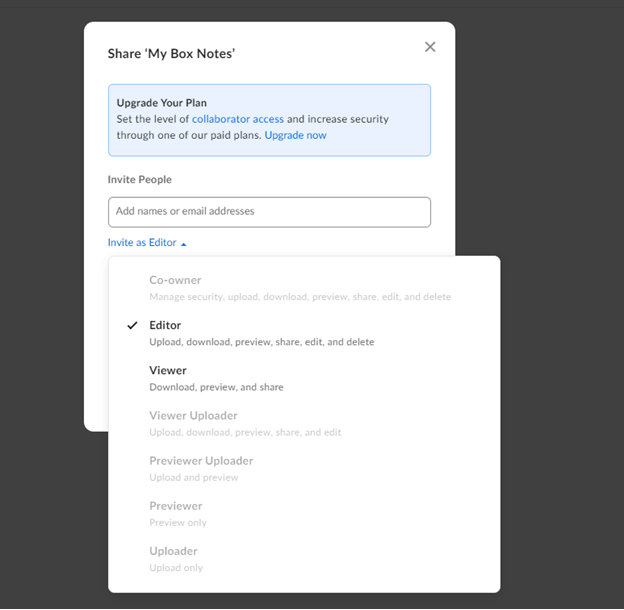
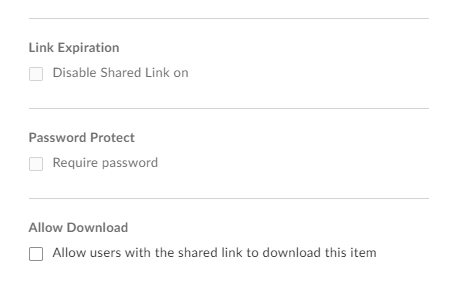
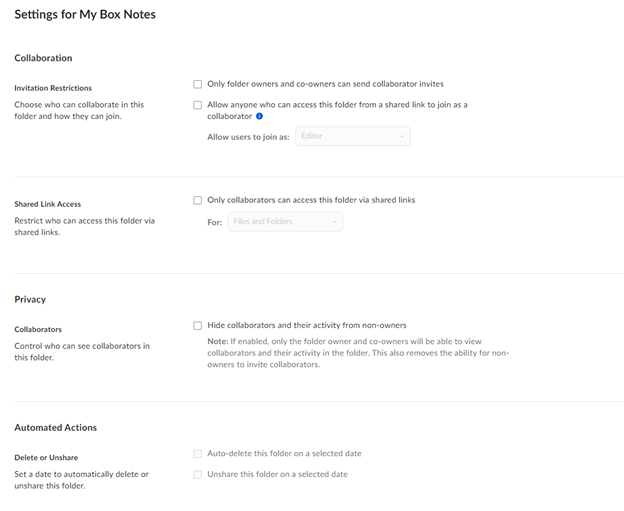
Users can preview, edit, and comment on files with @ mentions, with or without a Box account. However, they cannot comment on folders, a feature that’s only available on OneDrive.
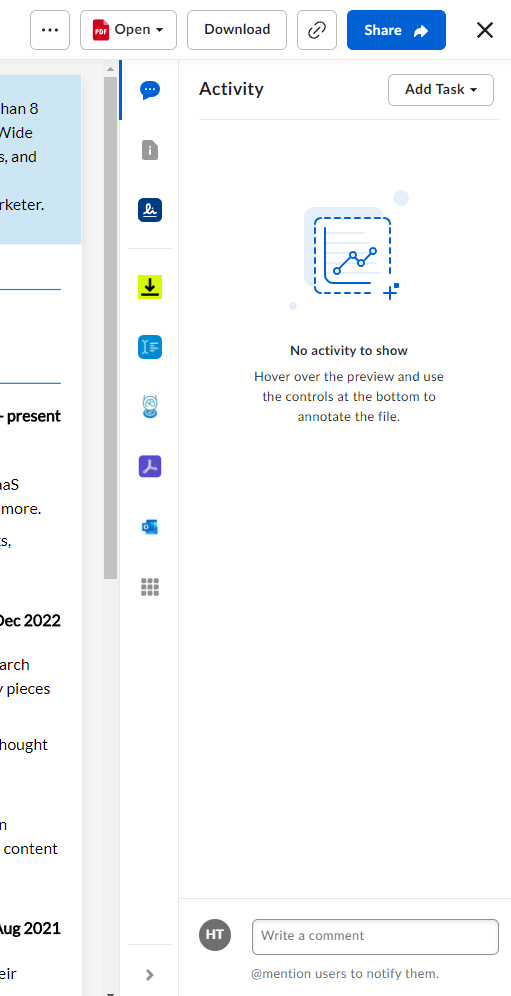
It integrates with popular productivity suites like Google Docs and Microsoft 365 for real-time co-editing of documents. It also has strong version control, allowing you to track changes across files and revert to up to 100 previous versions.

Source: Box
Rating: 4.5/5
OneDrive
OneDrive excels at collaboration, especially for businesses using Microsoft 365. Its native integration with Microsoft Office apps facilitates real-time co-authoring and editing of Word, Excel, and PowerPoint files.
You can save any Microsoft Office file to OneDrive with a simple click of the “Share” button.
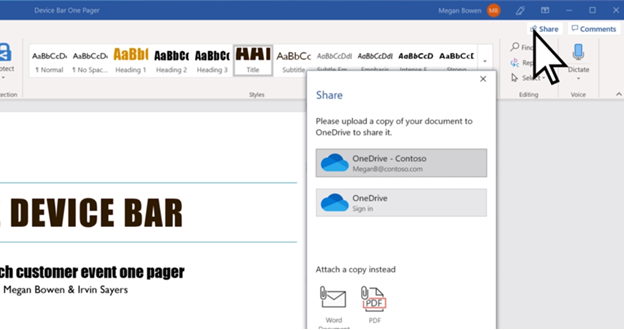
Source: Microsoft
It includes @ mentions, comments, and activity feeds for every file or folder.
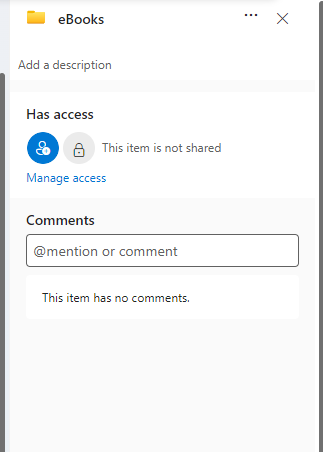 |
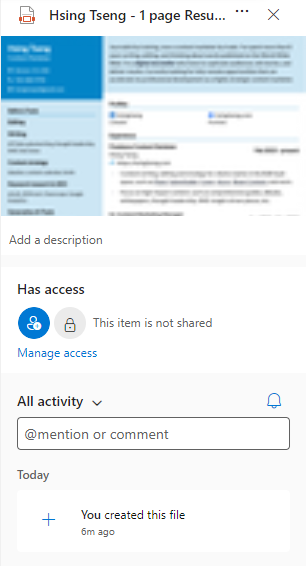 |
OneDrive also integrates seamlessly with Microsoft Teams.
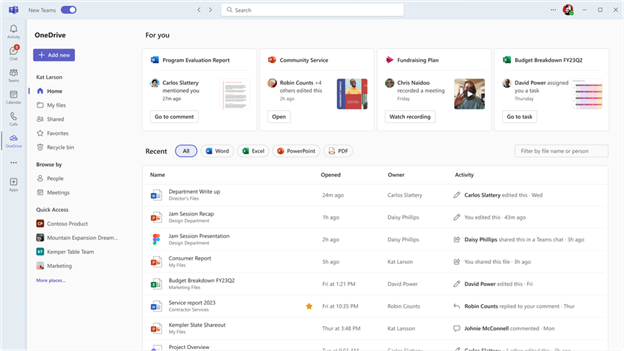
Source: Microsoft
You can set sharing permissions for files, expiring dates, and password protection for shared links.
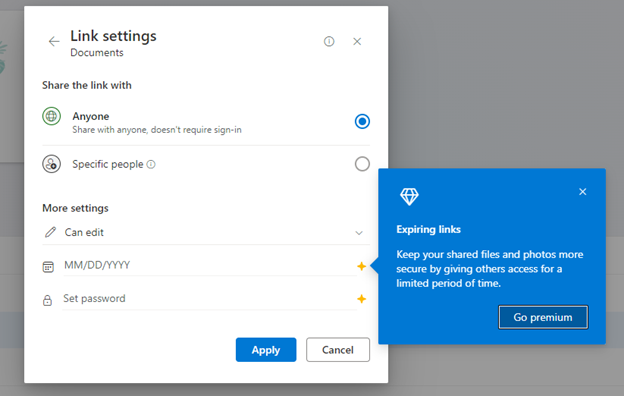
OneDrive’s version history stores up to the latest 500 versions of a file within the last 30 days.
Rating: 5/5 for Microsoft Office users, 4/5 for non-Microsoft users
Dropbox
Dropbox makes sharing files and folders via links extremely easy. It has permission settings, but it does not have the same level of granular access control as Box.
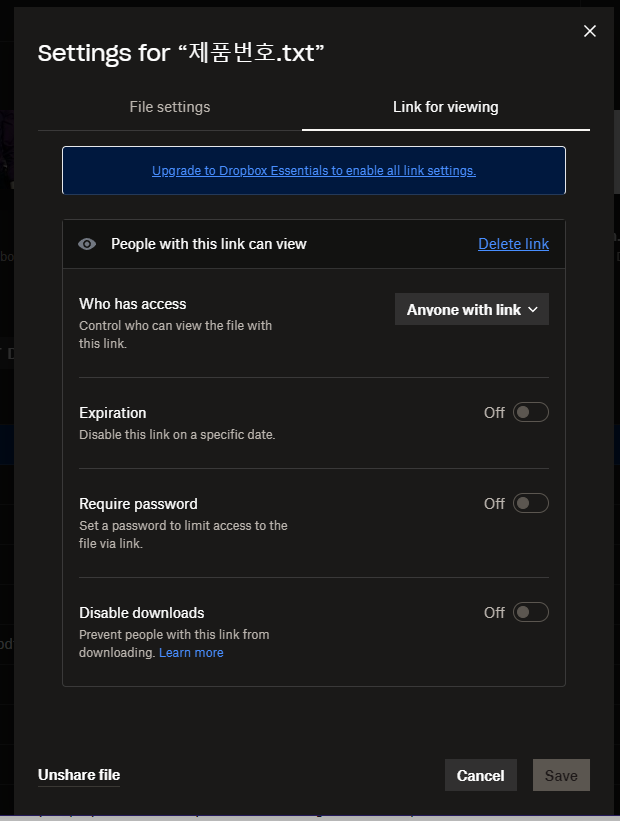
You can view each file or folder’s activity but can only leave comments on files or parts of files.

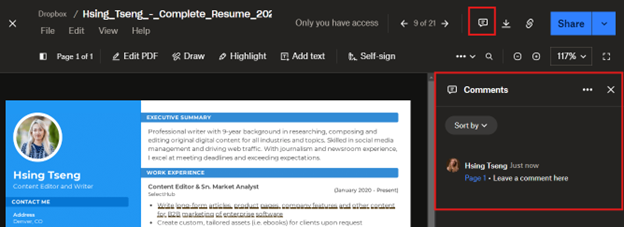
Dropbox has introduced real-time document editing through Dropbox Paper, but this is a newly-fledged first-party solution that teams may or may not want to use.
.jpg?width=624&height=366&name=undefined-Apr-22-2024-08-32-51-8042-PM%20(1).jpg)
Source: Dropbox
It does offer comments on files, including video commenting and annotations, a feature not supported by OneDrive or Box.

Source: Dropbox
Rating: 3.5/5
4. Ease of use
Box
Box has a clean interface but can have a slightly steeper learning curve for non-technical users due to hiding most of its features across different menus.
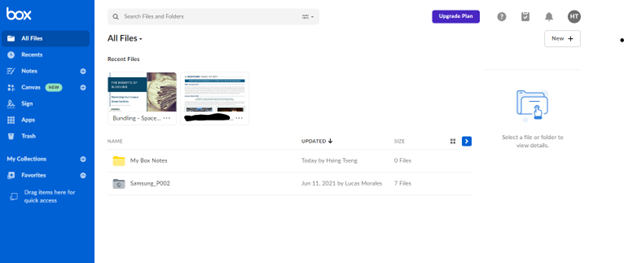
New users may need to explore and experiment with Box to fully utilize the platform’s various settings.
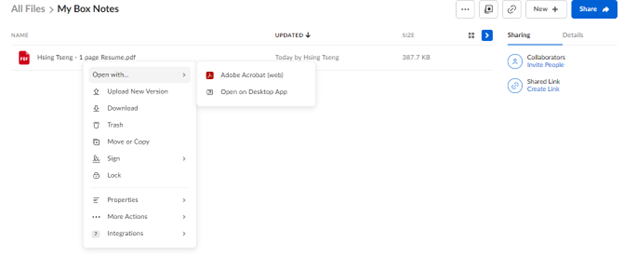
Rating: 4/5
OneDrive
OneDrive’s intuitive interface benefits from a familiar Microsoft ecosystem look and feel, making it easy for Windows users to adopt and integrate into their daily tasks.
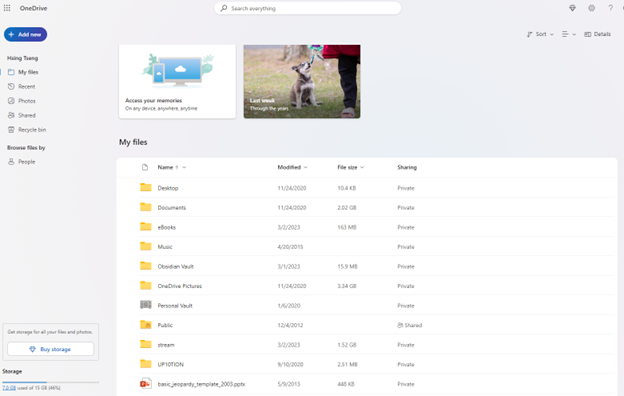
It prioritizes making core features like file management and sharing readily accessible via the top toolbar or right-click menu.
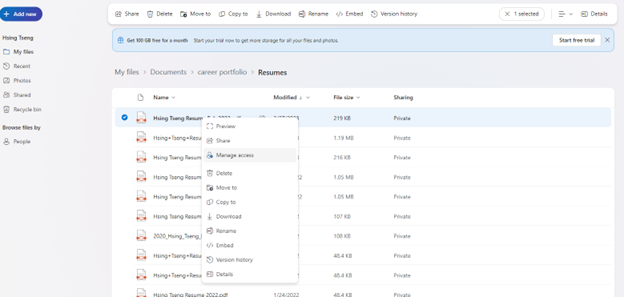
Rating: 4.5/5
Dropbox
Dropbox's product is characterized by simplicity, making cloud storage and file management highly accessible for users of all technical levels.
Its ease of use is unmatched, with a beginner-friendly, straightforward user interface that puts commonly-used actions all at the top of a user’s screen.

It keeps sharing, downloading, opening, and accessing files all doable within a right-click menu.

All you have to do to preview a file is click on it, and Dropbox opens a side pane to view that item, where you can then access a menu to do whatever you want with it.
Rating: 5/5
5. Integrations
Box
Box’s extensive app marketplace offers over 1,500 integrations across a wide variety of third-party apps and services, including Microsoft 365, Google Workspace, Slack, Trello, Jira, and more. It also integrates with many enterprise solutions, such as Salesforce and Oracle. Box also supports custom integrations through access to its developer API.

With Box’s built-in workflow automation tool, Box Relay, you can speed up repeatable manual work. For example, assign tasks, send notifications, or apply customizable file templates upon certain triggers, like a document being uploaded or signed.
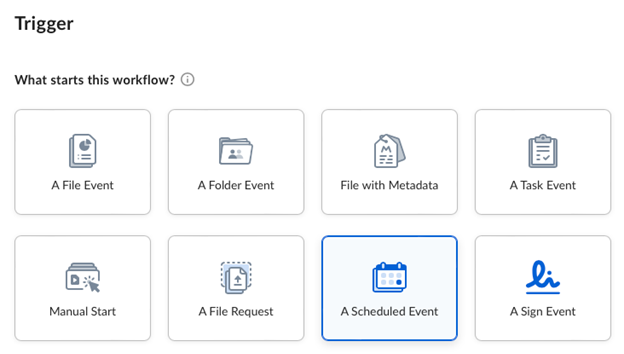
Source: Box
Additionally, Box has a built-in e-sign tool, Box Sign, for added value.
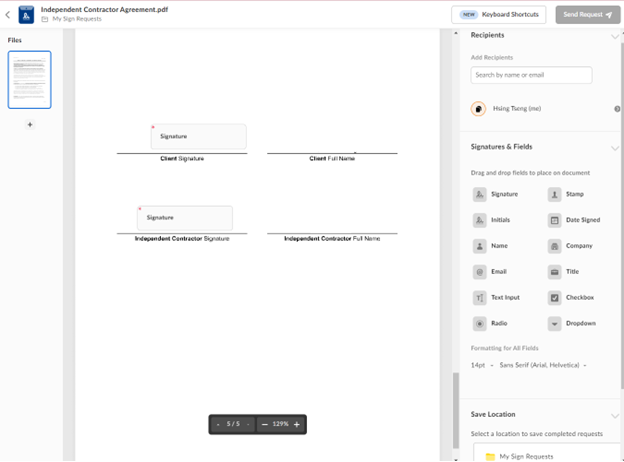
With support for so many different tools, Box is an excellent option for organizations with tall technology stacks looking to centralize their operations in a secure, compliant environment.
Rating: 5/5
OneDrive
OneDrive’s main strength lies in its native integration with the Microsoft 365 suite and Windows operating system. For example, in the browser version of OneDrive, the apps menu connects users directly to all their Microsoft apps at once.

It’s also the default Save As location for Microsoft Office apps, and comes installed by default on Windows operating systems.
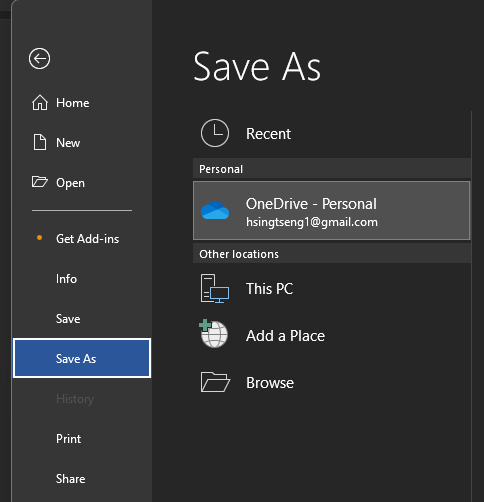
In this regard, for users heavily invested in Microsoft and Windows products like Word, Excel, PowerPoint and Teams, OneDrive soundly beats Box and Dropbox.
While OneDrive does support some third-party integrations, its selection is not as extensive as that of its competitors.
Rating: 4/5
Dropbox
Dropbox offers more third-party integrations than OneDrive but fewer than Box. However, it does offer Dropbox Extensions, which allow users to perform tasks like signing documents, sending emails, and editing PDFs without leaving the Dropbox interface.
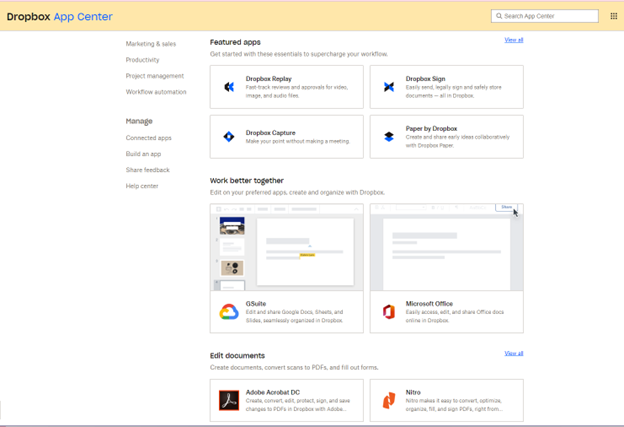
It also features a tight integration with Adobe Creative Cloud applications, which can be a highlight for creative professionals who often use Premiere Pro and similar tools.
Dropbox also offers its own e-signature tool, Dropbox Sign, included with most paid plans.
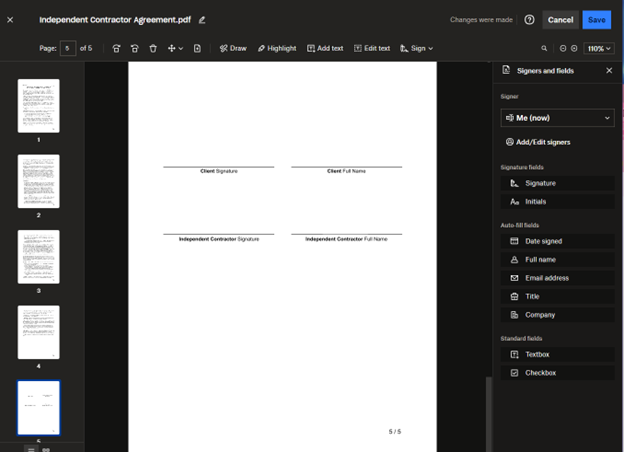
Rating: 4.5/5
Read more: I fell back in love with Microsoft: Fixing Prialto's bloated subscription tech stack
Box vs OneDrive vs Dropbox: Which should you choose?
Understanding your business needs, priorities, and digital ecosystem is crucial to making the right choice between Box, OneDrive, and Dropbox.
Here's a guide to help you navigate this decision:
Choose Box if:
- You prioritize security and compliance. If your business operates in an industry where data protection is paramount, such as healthcare, finance, or the legal sector, Box serves as an ironclad fortress for your digital assets.
- You need unlimited storage: As the only solution that offers unlimited storage capacity, if this is a must-have, Box is the vendor for you.
- You have a complex tech stack. With over 1,500 integrations, Box is more than likely to integrate with and streamline your business’s workflows, especially with Box Relay.
Notable Box customers: Farmers Insurance, IDEXX, and Intuit.
Choose OneDrive if:
- You’re already using Microsoft 365: There’s no economic sense in paying twice for cloud storage if you’re already invested in the Microsoft ecosystem, especially with how seamlessly OneDrive integrates with Office apps and services. There’s no better cloud storage tool than OneDrive for businesses powered by Microsoft 365.
- You want the most bang for your buck: Microsoft 365 and OneDrive subscriptions offer the most value for money, bundling the full power of Office apps. OneDrive is a highly cost-effective solution that provides excellent value, especially for small to medium-sized businesses.
- You value its integration with Windows: OneDrive is built into the very fabric of Windows 10 and 11, offering a level of convenience that’s hard to beat for Windows users.
Notable OneDrive customers: Accenture, Lowe’s, Nestle, and Prialto.
Choose Dropbox if:
- You need an easy-to-use tool. Dropbox is the most user-friendly, simple tool on this comparison list, and it is the easiest platform for teams to use with minimal training.
- You’re a creative: Thanks to its smooth integrations with Adobe and its video commenting tools, Dropbox is a popular choice for creative professionals.
- You need to upload large files: Dropbox's 2 TB single file upload size limit allows for larger uploads than Box (150 GB at the Enterprise Tier) and OneDrive (250 GB).
Notable Dropbox customers: Moleskine, Ben & Jerry’s, and Campaign Monitor.
Final notes
The right cloud storage solution for your needs will obviously vary from person to person, but here’s a little insight from our team at Prialto: Don’t pay for more than what you need.
When I examined our tech stack at Prialto, I was a bit surprised to see how much we were spending unnecessarily. We had been loyal Box users for years, but after comparing our subscriptions, we realized we were paying double for features that OneDrive offered as part of our existing Microsoft 365 subscription.
So we migrated to OneDrive as a strategic move to bring everything closer to the Microsoft ecosystem we’re already paying for, to optimize our team’s productivity, and to reduce our unnecessary overhead. It’s a decision that’s already paying dividends.
For more on productivity and working more efficiently, check out the Prialto blog.
